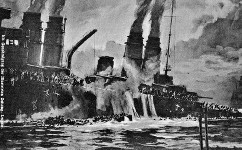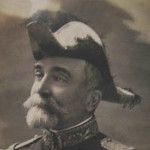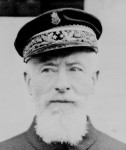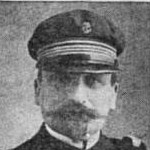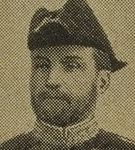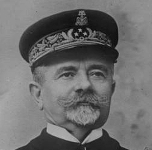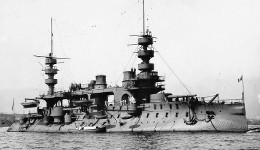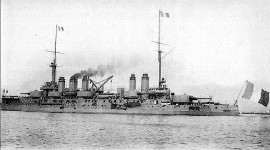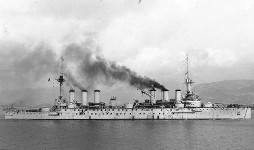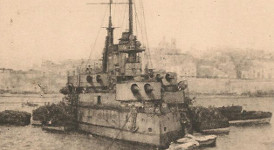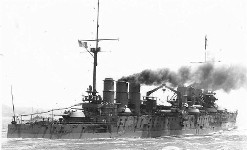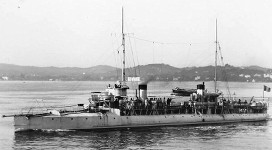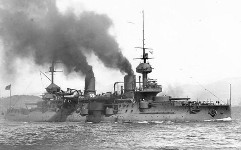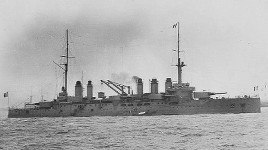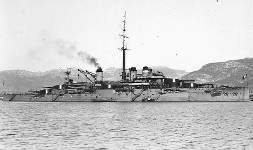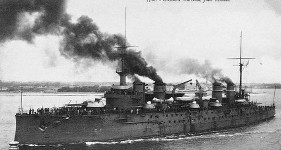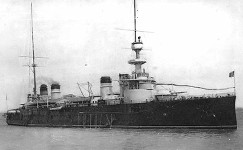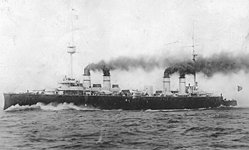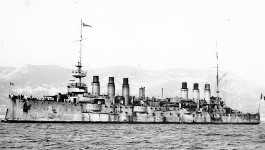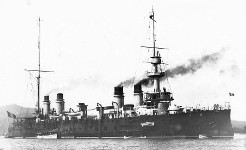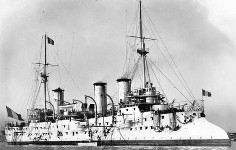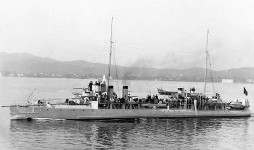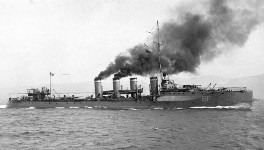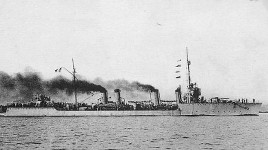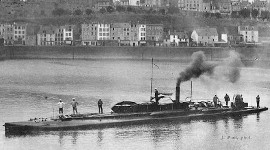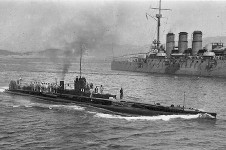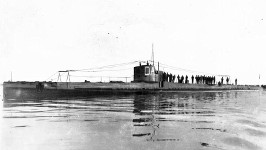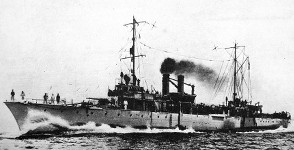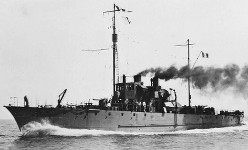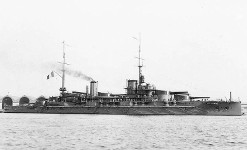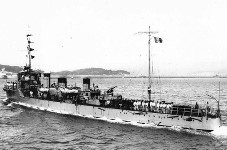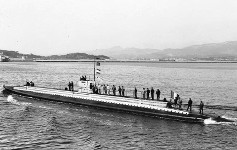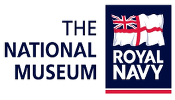Naval History Homepage and Site Search
|
|||||||||||||||||||||||||||||||||||||||||||||||||||||||||||||||||||||||||||||||||||||||||||||||||||||||||||||||||||||||||||||||||||||||||||||||||||||||||||||||||||||||||||||||||||||||||||||||||||||||||||||||||||||||||||||||||||||||||||||||||||||||||||||||||||||||||||||||||||||||||||||||||||||||||||||||||||||||||||||||||||||||||||||||||||||||||||||||||||||||||||||||||||||||||||||||||||||||||||||||||||||||||||||||||||||||||||||||||||||||||||||||||||||||||||||||||||||||||||||||||||||||||||||||||||||||||||||||||||||||||||||||||||||||||||||||||||||||
|
|||||||||||||||||||||||||||||||||||||||||||||||||||||||||||||||||||||||||||||||||||||||||||||||||||||||||||||||||||||||||||||||||||||||||||||||||||||||||||||||||||||||||||||||||||||||||||||||||||||||||||||||||||||||||||||||||||||||||||||||||||||||||||||||||||||||||||||||||||||||||||||||||||||||||||||||||||||||||||||||||||||||||||||||||||||||||||||||||||||||||||||||||||||||||||||||||||||||||||||||||||||||||||||||||||||||||||||||||||||||||||||||||||||||||||||||||||||||||||||||||||||||||||||||||||||||||||||||||||||||||||||||||||||||||||||||||||||||
|
|
|||||||||||||||||||||||||||||||||||||||||||||||||||||||||||||||||||||||||||||||||||||||||||||||||||||||||||||||||||||||||||||||||||||||||||||||||||||||||||||||||||||||||||||||||||||||||||||||||||||||||||||||||||||||||||||||||||||||||||||||||||||||||||||||||||||||||||||||||||||||||||||||||||||||||||||||||||||||||||||||||||||||||||||||||||||||||||||||||||||||||||||||||||||||||||||||||||||||||||||||||||||||||||||||||||||||||||||||||||||||||||||||||||||||||||||||||||||||||||||||||||||||||||||||||||||||||||||||||||||||||||||||||||||||||||||||||||||||
An
outline survey of the leadership, organisation, fleets
and squadrons of the French Navy 1900-1922 with special
emphasis on the years of conflict 1914-1918.
|
|||||||||||||||||||||||||||||||||||||||||||||||||||||||||||||||||||||||||||||||||||||||||||||||||||||||||||||||||||||||||||||||||||||||||||||||||||||||||||||||||||||||||||||||||||||||||||||||||||||||||||||||||||||||||||||||||||||||||||||||||||||||||||||||||||||||||||||||||||||||||||||||||||||||||||||||||||||||||||||||||||||||||||||||||||||||||||||||||||||||||||||||||||||||||||||||||||||||||||||||||||||||||||||||||||||||||||||||||||||||||||||||||||||||||||||||||||||||||||||||||||||||||||||||||||||||||||||||||||||||||||||||||||||||||||||||||||||||
|
1.
THE FRENCH NAVY ON THE ROAD TO WAR IN 1914
The outbreak of war in August 1914 came at an unfortunate time for the French Navy. After decades of confusion and controversy, a more consistent programme to create an up-to-date battle fleet had begun in 1912. The Naval Programme of 1912 was designed to provide France with a large battle fleet with ships of the most modern design in all categories within eight years . The programme envisaged a strength of 28 battleships, 10 scout cruisers, 52 destroyers and 94 submarines by 1920. Construction work was in its early stages when the German occupation of the industrial areas of north-eastern France combined with the manpower and industrial demands of the French army effectively suspended this programme. As a result, the French Navy had to achieve its objectives in the war at sea with a collection of inadequate ships, For most of the period since the formation of the Third Republic, the French navy lacked coherent and consistent direction in terms of policy, leadership, organisation and equipment. It was not immune to the bitter political rivalries of the Third Republic. Those rivalries included those between republicans and monarchists, between church and state, between capitalism and labour. Apart from the latter the others were either unique to France or more intense than in other countries. The bitter differences of opinion infected both the political and the professional leadership of the navy [and of the army!]. Ministers of Marine and Colonies changed with great frequency, and the naval leaders changed equally frequently to reflect the wishes of the minister *. Admirals were assigned post and promoted according to their political, religious or class background. The problem was compounded by the need for parliamentary approval for budgets and construction programmes. Rivalries between parties and individuals in parliament did not encourage consistency of direction in naval affairs. * In the 43 years of the
Republic up to 1914, there had been 44 ministers of
marine. Between 1900 and 1914, no fewer than 12 admirals
held the post of Chief of the Naval Staff.
The political confusion was matched by equally bitter rivalries within the navy itself. Admirals were divided publicly on a number of issues. The most persistent division was that between the advocates of two different visions of the structure of the navy, and consequently, on the type of warship required. The debate was dominated by the 'Jeune Ecole' from the mid 1880's until about 1905/06. Their ideas were opposed by the 'Traditionalists.' The ideas of the 'Jeune Ecole' were the brainchild of Admiral Hyacinthe Laurent Theophile Aube when he was minister of marine 1886-1887. This debate was 'a minority sport' compared to the predominance of the Army, and the debates and rivalries within it. Discussion began on the common assumption that the greatest maritime danger to France was Britain. The problem was the means by which France could be protected against a British naval attack. The essence of the debate was the type of force needed to protect the French coast - in the Channel, Bay of Biscay, and the Mediterranean. The 'Jeune Ecole' rejected the idea of constructing a battle fleet sufficiently strong to nullify British pre-dominance at sea. Although they recognised the importance of attacks on British commerce, they placed their faith in the torpedo. In their eyes, the torpedo rendered obsolete large armoured warships. They advocated the construction of swarms of torpedo boats which would be stationed along the coast - even suggesting at times that each small harbour, as well as the major bases, should have a flotilla of torpedo boats. In their view, the development and construction of battleships was a waste of time and resources. Admiral Aube suspended all battleship construction between 1882 and 1889. Instead the construction of torpedo boats was accelerated so that 370 torpedo boats were built between 1875 and 1908. This view was not shared by the traditionalists who demanded that the navy focus on the construction of a battle fleet capable of challenging the Royal Navy at sea. This group began to have more influence in the 1890's by which time the elements of a battle fleet had started to come out of the shipyards. By 1896 an active battle fleet had begun to appear, but this progress towards the creation of an effective and homogenous battle fleet was delayed at the end of the 19th century. As minister of marine 1902-1905 Charles Camille Peletan devoted funds not only to torpedo craft but also authorised the construction of 35 small submarines for coastal defence [almost all were so ineffective that they were discarded long before 1914] . As a result, battleship construction was delayed to such an extent that the main component of the battle fleet in 1914 were the twelve pre-dreadnoughts of the Republique, Liberte, and Danton classes which entered service as late as 1906-1911. Construction of the first dreadnoughts began only in 1911. Building on a long-term interest in commerce warfare against Britain, an obsession with armoured cruisers became the new slogan of the 'Jeune Ecole'. Their observations of the Sino-Japanese war seemed to suggest that armoured cruisers. with their higher speed, could use the greater rapidity of fire of their lighter guns to overwhelm the more ponderous battleship. [A similar argument was to be made in the 1930's when some advocated that the more rapid firepower of the six-inch gun light cruisers could overwhelm the eight-in gun heavy cruisers with their slower rate of fire]. Advocates of the armoured cruiser argued that they would be very useful in conducting a 'guerre de course' against British trade. This view was shared by admirals in Britain, Germany and the United States - hence the large armoured cruiser construction programmes of the first decade of the 20th century. The combination of the study of the Russo-Japanese War, and the Entente Cordiale, strengthened the argument for a balanced force centred on battleships. Increased awareness of other maritime threats, and a persistent overstatement of their case, drew the sting out of the 'Jeune Ecole.' France became more aware of the threat to their predominance in the Mediterranean of the increased size and power of two countries who were Germany's allies: Italy and Austria-Hungary. The challenges of the Mediterranean took attention away from coastal and commercial warfare, and encouraged France to think in terms of a battle fleet of sufficient power to meet the challenge of the expected combined fleets of Italy and Austria-Hungary. Hence the naval programme of 1912. State
of the Navy 1914
On the positive side, a battle fleet [the Armee Navale] had been created and was concentrated in the Mediterranean. The first class of dreadnoughts was entering service. Eleven semi-dreadnoughts formed the bulk of the fleet - but the two battle squadrons were smaller than the 8 ship squadrons of the British and German fleets. The armoured cruisers were divided almost equally between Toulon and Brest. Those in the Mediterranean to provide a fast wing for the battle fleet while those at Brest were to conduct operations against surface raiders. There no light cruisers capable of either scouting for the battle fleet or leading torpedo boat destroyers into the attack against the enemy fleet. Most of the destroyer force was composed of boats of limited seaworthiness - too small for more than coastal operations [a legacy of the 'Jeune Ecole'] Nearly half the submarines were steam-powered and therefore operationally vulnerable: most submarines of both types of propulsion were too small for duties other than coastal defence. Challenges
and Roles Expected
The most important role was to concentrate the battle fleet in preparation for conflict either with Italy and Austria-Hungary combined, or with the latter alone. The Italian decision for neutrality in 1914, and then for war against Austria-Hungary, made this task a little bit easier. The Armee Navale was deployed to counter any excursion out of the Adriatic by the Hapsburg fleet. The Army insisted on immediate naval protection for the transfer of the three divisions of the 19th Corps in North Africa to France where they would join the other forty active divisions in a war against Germany. Again, this task was made easier by the Italian decision to remain neutral - for the time being. The third anticipated task was the protection of French commerce and colonies with cruiser forces against German surface raiders. This task was largely accomplished by the Royal Navy in 1914. Additional unforeseen tasks were: Provision of substantial
forces in the eastern Mediterranean - Dardanelles,
Salonika, Levant
Protection of Channel ports and coast after German military success in 1914 The German U-boat campaign 2.
HIGHER ADMINISTRATIVE ORGANISATION 1914-1918
click
for list of French Flag Officers 1914-1918
Note: this only covers the equivalent of Royal Navy Executive/Military officers, and not Civil Branch officers e.g. engineering, medical etc The Ministry of Marine provided the higher policy making and administrative direction for the Navy. The occupants of the principal posts during the war years were: Minister of Marine
Armand Gauthier
03.08.14-Victor Augagneu 24.10.15-Contre Amiral Lucien Lacaze 09.08.17-Charles Chauroy 16.11.17-Georges Leygues Chief of the Naval Staff (CNS) 02.05.14-Vice Amiral
Louis Pivet
07.12.14-Vice Amiral [ret] Jacques Aubert 02.05.15-Vice Amiral Pierre de Jonquieres 09.03.16-Vice Amiral Ferdinand de Bon -17.5.19 Deputy Chief of the Naval Staff (DCNS) 6.13-Contre Amiral
Ferdinand de Bon
12.14-Captain Zepheron Schwerer 11.15-Contre Amiral Maurice Grasset 5.16-Contre-Amiral Benjamin Merveilluex du Vignaux 27.07.17-Contre-Amiral Robert de Marguerye 04.06.18-Contre-Amiral Alexandre Lanxade Inspector-General, Fleet Services 1.14-Vice Amiral Jean
Gaschard
5.15-Vice Amiral Edouard Amelot 3.16-Vice Amiral Francois le Cannellier 12.17-Vice Amiral Antoine Tracou Maritime
Prefectures (MP)
The principal devolved administrative organisation, akin to the Royal Navy's home commands in role and prestige. The main office-holders were the Prefect, the Major-General [Port Admiral], and Coast Defence Commander. CHANNEL COAST
1st Maritime Prefecture, Cherbourg
ATLANTIC COAST 2nd Maritime Prefecture,
Brest
BAY OF BISCAY COAST 3rd Maritime Prefecture, Lorient
4th Maritime Prefecture, Rochefort
MEDITERRANEAN 5th Maritime Prefecture, Toulon
Martime Prefecture,
Bizerte, Tunis
3.
DEVELOPMENT OF THE FRENCH BATTLE FLEET UP TO 1914
click for major French warship classes, extant in 1914, in outline
By 1896, the French had developed a reasonably effective battle squadron in the Mediterranean [even if they were 'specimens'] and this changed qualitatively and geographically by 1914. A greater uniformity of squadrons by class is evident from 1907 onwards. The concentration of battleships in the Mediterranean occurs in August 1911 when the Armee Navale is formed.
4.
ORDER OF BATTLE OF THE FRENCH FLEET, AUGUST 1914
click for major French warship classes in outline Mediterranean
Atlantic and Channel
Overseas Stations
[major ships only]
5.
THE WAR IN THE MEDITERRANEAN
Effective
Naval Forces in the Mediterranean, August 1914
The
Challenges
The principal French force in the Mediterranean was the ARMEE NAVALE. The main purpose of this fleet was to prepare to engage the Austro-Hungarian Fleet in battle. Given the reluctance of the latter to leave port in the northern Adriatic, the Armee Navale was employed as the main force behind attempts to confine the Austro-Hungarian naval forces within the confines of the Adriatic. In August 1914 - having accomplished its initial task of protecting the troop convoys from North Africa to France from the threat posed by the German Mediterranean Squadron - it moved to Malta. After the entry of Italy into the war it moved light forces to Brindisi and the battleships to Corfu. Apart from some distractions in the Aegean, the Armee Navale spent most of the war at anchor at Corfu. Like the British Grand Fleet, it had to wait for the enemy to leave harbour - which it never did. Behind this 'shield' the French Navy was able to deploy older battleships and cruisers, as well as destroyers and submarines on tasks elsewhere in the Mediterranean. Most of these tasks were not anticipated. They involved the use of heavy ships in the Anglo-French attempt to force the Dardanelles, and support for the subsequent ground campaign at Gallipoli. With the insertion of allied forces into the Balkans at Salonika in the autumn of 1915, heavy forces were required to support that operation for the rest of the war. This would involve a major demonstration of naval power to overawe Greece in 1916. Another consequence of the entry of Turkey into the war was the requirement to support ground operations off the coasts of Egypt, Palestine and Syria until the end of the conflict. The entry of Italy provided the opportunity to forward deploy light forces [including destroyers and submarines] into the southern Adriatic to block the Straits of Otranto and so inhibit the movement of Austro-Hungarian and German submarines into the Mediterranean sea lanes. As the U-boat war intensified destroyers and patrol forces had to be extended to cover a wider area in agreement with allied decisions on areas of national responsibility. Throughout the conflict the French high command had to co-ordinate their efforts with those of the Italian and British navies. This was not an easy task because of differing national requirements and cultures, even when the allied naval commander-in-chief was the commander-in-chief of the Armee Navale - which was for the duration of the conflict. Battleship
Deployment
click following for French battleships classes in outline: Dreadnoughts, Semi-Dreadnoughts and the later Pre-Dreadnoughts The main components of the Armee Navale were the Battle Squadrons and Cruiser Divisions details of which are given below. In general a battle squadron consisted of six ships. The squadron was sub-divided into two divisions. The first division was commanded by a vice admiral [VA] who was the squadron commander, and the second division by a rear admiral [CA] Commander-in-Chief, Armee Navale 02.03.11- VA Augustin
Boue de Lapeyrere
10.11.15- VA Louis Dartige du Fournet [dismissed] 08.12.16- VA Dominique Gauchet Until 16.04.16-the organisation of the battle fleet was: Fleet
Flagship
Courbet 19.10.15-France Most of the other dreadnoughts were described as 'hors rang' - not allocated to a squadron but under direct command of the CinC. They were: Jean Bart [torpedoed
21.12.14 and under repair until 11.04.15]
France commissioned 7.14; became flagship 19.10.15 Paris commissioned 8.14 and allocated to 1st Squadron until 16.0.416 Courbet became private ship 19.10.15 The two battle squadrons were composed of the semi-dreadnoughts ships of the Danton class, and the pre-dreadnoughts of the Republique and Verite classes:
Upon re-organisation on 16.04.16, the battle fleet consisted of- Fleet
Flagship
Provence
A further re-organisation took place on 01.07.18
* deployed to Aegean
summer 1918 to counter possible excursion by 'Goeben'
Older Pre-Dreadnoughts
At the outbreak of war, all the older pre-dreadnoughts were grouped into one of two squadrons. They were:
In September 1914, Suffren and Verite were sent to the Dardanelles; the latter returned and the older dreadnoughts formed under command of CA Guepratte for operations in the that area. Between 1st March 1915 and 15th April 1916, the pre-dreadnoughts were grouped into two squadrons for service off Gallipoli and the Syrian coast.
The re-organisation of the Armee Navale on 16.04.16 was reflected in the organisation of the pre-dreadnoughts:
The final distribution of pre-dreadnoughts, from 7.08.17 was:
Armoured
Cruiser Deployment
click for French armoured cruiser classes in outline
In August 1914, the armoured cruisers of the Armee Navale were grouped into the 1st Light Division which was divided into two divisions. The two divisions were combined into one on 12.08.17.
Other armoured cruisers which operated within the Mediterranean were:
Other Flag Officers employed in the Mediterranean;
6.
OPERATIONS IN THE ATLANTIC AND CHANNEL
click for French armoured cruiser and protected cruiser classes in outline
These were two closely related geographic areas with different requirements. In the Atlantic the French Navy devoted its resources to trade protection. Firstly, by patrolling the western Channel in co-operation with the British Navy to frustrate any German attempt to attack the cross-channel troop convoys. Then, it extended its resources to general commerce protection. Using armoured cruisers, a network of patrols covered the Atlantic sea-lanes, with ships deployed as far south as West Africa, and as far west as the Caribbean. From the spring of 1917, the cruisers joined with those of the British and American navies to protect the troop convoys bringing the American Expeditionary Force to Europe. French forces in the Channel assisted those of the British Navy in protecting the straits of Dover, in coastal defence in the mid channel, and in supporting naval operations in the southern North Sea. No ships larger than a destroyer were involved in these operations. An indication of the forces involved can be found in Section 7 devoted to destroyers which follows this section. Armoured
Cruisers
Between August 1914 and November 1915, the principal force in the Atlantic was the 2nd Light Squadron, made up of two divisions of armoured cruisers. A further division was formed from cruisers in reserve. 2nd Light Squadron
02.08.14-15.11.15
* detached to West
Indies and Mexico until 1.05.16
After the abolition of the 2nd Light Division, the light divisions were consolidated into a single division:
On 1.05.16, a further re-organisation took place:
This was followed by the creation of the 6th Light Division in West African waters on 05.07.16. The division was disbanded on 15.10.17:
Between 1.06.17 and 28.05.18, the cruiser divisions were:
The final organisation consisted of the Division d'Atlantique formed on 28.05.18
Old
Armoured and Protected Cruisers
A number of obselete and very elderly armoured cruisers, and protected cruisers were employed in a range of tasks which are summarised below:
Two Armoured Cruisers served in the Far East until summer 1915. They were: Montcalm Dupleix These are listed under original location and status in August 1914. Squadrons are listed in numerical sequence according to initial allocation to Mediterranean or North/Atlantic. As precise dates for movements of most individual boats are not available, the squadron composition is given for specific dates when such information is available. Mediterranean
Squadrons
Flotilla
Leaders
Bouclier
Destroyer Flotilla to Flotilla Leader Brindisi June
1915 12.16-Dunkerque
Dehorter Submarine Flotilla 4.16-11 Sqn 12.16-Aegean 7.18-6 Sqn
Atlantic
& Channel Squadrons
1914-1915
Until 15.11.15 the destroyer squadrons were under the command of the 2nd Light Squadron: CA Albert Rouyer
27.10.14-VA Charles Favereau Division de Grand Torpilleurs Capitaine Mehl
Francis Garnier Aventurier 10.14- Intrepide 10.14
* to Mediterranean late
1915
On 02.11.15 CA Charles de Marliave became Commander Channel Flotillas. He was succeeded by VA Pierre Ronarch on 10.16 as Commander Channel and North Sea Forces - a post held by him until the end of the war In 08.17 the boats in the Atlantic came under command of CA Zepherin Schwerer who bore the title Commander of Patrols Ocean and Channel. 1916-1918
Division de Grand
Torpilleurs, Dunkerque 11.15
Far East 1914-1916 Fronde, 3.15 to
Mediterranean
Mousquet, sunk by SMS Emden off Penang 25.10.14 Pistolet, 6.16 to Mediterranean Mediterranean
All appear to have remained in the Mediterranean
Atlantic/Channel
Many appear to have transferred to the Mediterranean
On 7/12/18 a new force structure for the submarine service was announced: Squadrons of 8 boats each at Cherbourg, Brest, Toulon, and Bizerte; with 10 boats allocated to training duties. This was reduced to 15 operational boats on 1.01.20 with a further 20 in reserve, and 8 under construction. Brought into service from 1916, starting with the British built Flower class. All allocated to patrol duties to protect convoys from German submarine attacks.
ASW
Gunboats
[all completed 1917]
10.
DISTRIBUTION OF FRENCH NAVAL VESSELS, NOVEMBER 1918
click for major French warship classes in outline
Mediterranean
Atlantic/Channel
11.
SUMMARY OF LOSSES AND NEW CONSTRUCTION 1914-1918
As a result of the peace treaties, the French Navy acquired a number of German ships and submarines which were on active service from 1921. Some remained in service until the mid 1930's. The totals were: 4 light cruisers
9 destroyers 11 submarines In addition: 1 light cruiser and 1
destroyer were acquired from Austria-Hungary.
12.
DISTRIBUTION OF FRENCH NAVAL FORCES January 1922
Immediately after the war, the French Navy rid itself of most of its old or obsolete warships - apart from the armoured cruisers which were retained until new construction came into service. The gap between the size of the need and what was required to fill its commitments was filled by ships acquired from Germany and Austria-Hungary as a result of the peace settlements. The following distribution list shows the order of battle for January 1922 just as the Washington Naval Treaty was about to be signed [6th February], and the French government approved a new construction programme [28th March]. The latter would provide a modern and powerful navy for France by 1939.
13.
SOURCES
1. Books
Jean Labayle
Couhat: French Warships of World War 1
Conway's All The World's Fighting Ships 1860-1905 Conway's All The World's Fighting Ships 1906-1921 Jean Guiglini: Les Marques Particulieres des Navires de Guerre Francais [1900-1950] Paul G. Halpern: A Naval History of World War 1 Vincent O'Hara: To Crown the Waves-The Great Navies of the First World War 2. Internet sources [all French] Marine Forum
[forummarine.forumactif]
Histomar [www.histomar.net] Navires 14-18 [www.navires 14-18.com] Pages 14-18 [www.pages14-18.mesdiscussions] Naval School [www.nav.traditions.free] |
|||||||||||||||||||||||||||||||||||||||||||||||||||||||||||||||||||||||||||||||||||||||||||||||||||||||||||||||||||||||||||||||||||||||||||||||||||||||||||||||||||||||||||||||||||||||||||||||||||||||||||||||||||||||||||||||||||||||||||||||||||||||||||||||||||||||||||||||||||||||||||||||||||||||||||||||||||||||||||||||||||||||||||||||||||||||||||||||||||||||||||||||||||||||||||||||||||||||||||||||||||||||||||||||||||||||||||||||||||||||||||||||||||||||||||||||||||||||||||||||||||||||||||||||||||||||||||||||||||||||||||||||||||||||||||||||||||||||
|
return to World War 1, 1914-1918
|
|||||||||||||||||||||||||||||||||||||||||||||||||||||||||||||||||||||||||||||||||||||||||||||||||||||||||||||||||||||||||||||||||||||||||||||||||||||||||||||||||||||||||||||||||||||||||||||||||||||||||||||||||||||||||||||||||||||||||||||||||||||||||||||||||||||||||||||||||||||||||||||||||||||||||||||||||||||||||||||||||||||||||||||||||||||||||||||||||||||||||||||||||||||||||||||||||||||||||||||||||||||||||||||||||||||||||||||||||||||||||||||||||||||||||||||||||||||||||||||||||||||||||||||||||||||||||||||||||||||||||||||||||||||||||||||||||||||||
